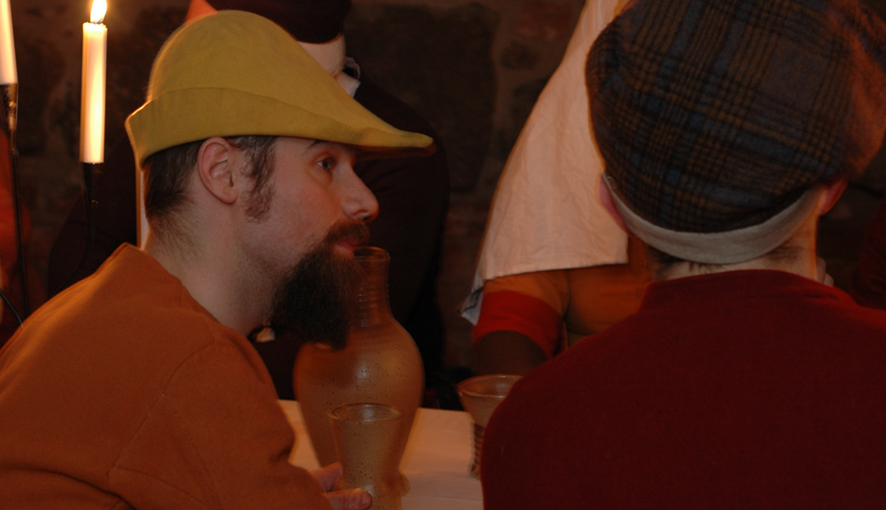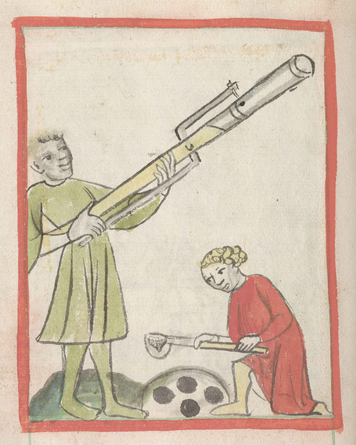I have previously posted a link to the blog Neulakko, and I’m doing it again. Elina tells the tale of her new, cool frilled veil!
Maria tells about her finished weaving project
Maria and Peter has a blog called In deme jare cristi, where they (sometimes) post articles about medieval stuff. This time Maria posted about her latest weaving project. Read all about it here.
The masters of Ringschule Wroclaw show Lignitzer
Piotr and Tomek from the fabulous Ringschule Wroclaw show some wrestling from Lignitzer:
Andreas Lignitzer was a wrestling- and fencing teacher of the early 15th century, and he was probably a disciple of the great Johannes Liechtenauer.
The feast of Saint Staffan
With one single exception we have had the feast of Saint Staffan every year since 2007. This December it’s time again; we will perform a mystery play regarding the martyrdom of Saint Stefanus (in Sweden known as Sankt Staffan or Staffan stalledräng), the first martyr. We will also eat tremendous amounts of pastries and sweets, and we will drink loads of hippocras. In short – it will be a blast!
How to wear 14thc headdress if you are female
Elina at the excellent blog Neulakko has been thinking about female headdress. I believe she is asking many important questions about the headwear fashion of that age; not much has been said on the details of the issue, except for Isis Sturtewagen’s tremendous work with sources of frilled headwear. Have a look at both these blogs – they are really worth the trouble!
Firearrows and cannon shot

Perhaps fire arrows like those in the link below were used in the Swedish Loshult cannon, 1340-1360?
I found this forum thread, showing a lot of cool stuff; above all the fire arrows and arrows used in pot-de-fer-cannons, such as described/linked to in these posts:
Die Geschützdarstellungen des Walter de Milemète von 1326/7
Fitting round pegs into square holes?
Cool page about the earliest cannons
Firing handgonnes with meal powder
The earliest firearms didn’t use granulated powder, but finely ground. Previously, I have posted a link about slow burning powder, where a guy (the same one as in these clips?) argues that a gunner had the time to ignite his powder, take aim and wait for the actual shot.
These movie clips show that principle, which indeed makes it possible – if not probable – that handgunners acted alone, although other evidence suggests they also could have acted in pairs.
Some films about reconstructed handgonnes
The serpentine lock – the earliest known form of trigger – is depicted in Johannes Hartlieb’s Kriegsbuch from 1411. This guy has reproduced a handgonne with this kind of lock.
Here, the same guy is readying and shooting his handgonne:
The distance to the target is not far, and his shooting conditions are perfect, but it is still a reminder of that the handgonnes of the age had at least decent accuracy, which made them usable in combat.
Fredrik tells about his falchion
The latest post links to a description of a scabbard for a falchion. This post links to the falchion-owner’s blog post about his weapon. In Swedish.


